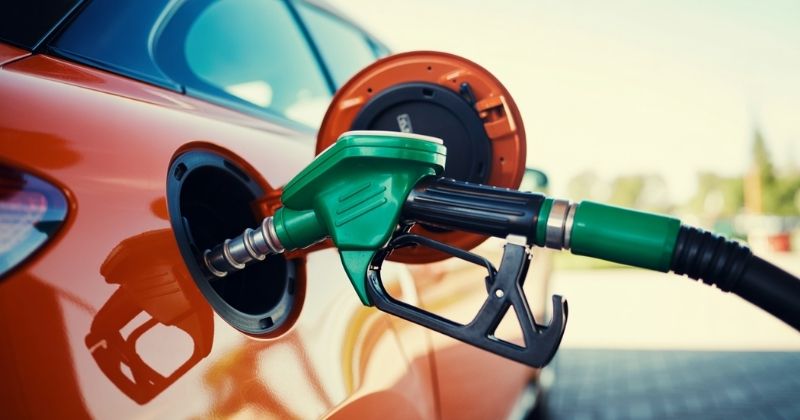
Although international oil prices have recently eased and the South African rand has shown notable stability amid geopolitical unrest, the outlook for fuel prices in the country remains bleak. Fuel recoveries are still sitting firmly in negative territory, indicating that price hikes are likely to be confirmed in the coming week. This will place further pressure on household budgets already strained by food inflation, electricity hikes, and stagnant wages.
Key Takeaways
- Fuel Price Increases Confirmed: South African motorists should expect petrol and diesel prices to rise in July 2025, with petrol set to increase by around 50 to 53 cents per litre and diesel by up to 84 cents per litre.
- Geopolitical Tensions Drove Up Oil Prices: The brief but intense conflict involving Israel, Iran, and the United States caused oil prices to spike, leading to under-recoveries in local fuel pricing despite a later pullback.
- Rand Provides Partial Relief: Although the rand remained relatively strong during this volatile period and helped reduce the fuel under-recovery by about 16 cents per litre, it was not enough to offset the earlier damage caused by the oil price surge.
About Arcadia Finance
Easily secure your loan with Arcadia Finance. Pay no application fees and choose from 19 trusted lenders, all accredited by South Africa’s National Credit Regulator. Enjoy a smooth, reliable process designed around your financial needs.
CEF Data Points to Ongoing Under-Recoveries
The latest figures released by the Central Energy Fund (CEF) at the end of the month reveal that South African fuel prices have continued to reflect under-recoveries since the outbreak of hostilities in the Middle East. This includes Israel’s initial attack on Iran and the subsequent United States airstrikes, which have had a considerable impact on energy markets. The figures indicate that petrol is facing an under-recovery of approximately 50 cents per litre, while diesel is experiencing a sharper under-recovery of around 82 cents per litre. These under-recoveries are a clear warning sign that consumers will soon face steeper pump prices, potentially triggering knock-on effects on the cost of transporting goods and services across the country.
Despite a notable drop in oil prices and the rand’s relatively strong performance, these developments came too late in the pricing cycle to offset the fuel price recoveries for July. The major shifts in the oil market occurred after the middle of the month, meaning their potential to soften price increases was largely lost in the current review period. This timing mismatch has locked in the damage for July, leaving motorists to absorb the brunt of global volatility.
Fuel costs aren’t just moving, they’re surging. Get the long-view in The Harsh Petrol Price Forecast for July 2025, where you’ll see how today’s bump plays into a much steeper climb by mid-next year and what that means for your monthly budget.

Projected Fuel Price Adjustments for July 2025
Based on current data, the projected adjustments for July are as follows:
- Petrol 93: expected increase of 50 cents per litre
- Petrol 95: expected increase of 53 cents per litre
- Diesel 0.05% (wholesale): expected increase of 82 cents per litre
- Diesel 0.005% (wholesale): expected increase of 84 cents per litre
- Illuminating paraffin: expected increase of 67 cents per litre
These increases will affect every sector dependent on fuel, from logistics and agriculture to small business operations and commuter transport.
Conflict in the Middle East Triggered Market Shock
Fuel prices had initially been on course for a small reduction earlier in the month. However, this outlook changed abruptly when Israel launched a strike on Iran, which caused oil prices to surge. As Iran retaliated, market nerves were heightened, but it was the US decision to bomb Iranian nuclear facilities that truly escalated the conflict, sending global markets into a frenzy. Oil prices temporarily climbed above 80 US dollars per barrel but began to retreat once Iran signalled a more restrained response to the escalation. A ceasefire was later declared, pushing oil prices down by nearly 18 percent, bringing the commodity below 70 US dollars per barrel. Despite the dramatic decline, the damage to South Africa’s fuel pricing had already been done, making the local pricing mechanism lag behind market recoveries.
Before the outbreak of the short-lived 12-day war between Israel and Iran, market analysts had anticipated a global surplus of oil supplies, largely due to weak demand and increasing production from OPEC+ countries. Once the possibility of the Strait of Hormuz being shut down was no longer seen as a pressing threat, markets began adjusting to the anticipated supply glut. However, by then, the price damage caused by the conflict had already filtered through to South African fuel prices, as shown by the current level of under-recoveries ranging between 70 and 100 cents per litre. The conflict may have been brief, but it delivered a long-lasting blow to global oil confidence and local price stability.
Rand Offers Some Relief to Soften the Blow
Although the oil price trends have not been favourable for local motorists, the rand has remained relatively strong during this turbulent period. According to insights from the Bureau for Economic Research (BER), the market volatility following the United States’ airstrike on Iran and Iran’s limited military response did not severely weaken the local currency. The rand’s strength has largely been shaped by broader global currency movements, particularly in relation to the strength or weakness of the US dollar, rather than local developments. This resilience has offered a thin silver lining amid otherwise negative price signals, although not enough to fully shield consumers.
Currency Reaction Driven by Global Sentiment
Following the US strike, investors rushed into the dollar as a safe haven, leading to a temporary weakening of the rand. However, as markets calmed and risk appetite returned, the rand regained some strength. Further support came when US President Donald Trump hinted at replacing the Federal Reserve Chair sooner than previously expected, causing the dollar to lose ground. This allowed the rand to appreciate by about 2 percent against the US dollar this week. Against the British pound and the euro, the currency showed little change. The relative strength of the rand has shaved approximately 16 cents per litre off the overall fuel under-recovery, cushioning what would have otherwise been more severe increases. Even with this reprieve, the final adjustments will still leave motorists paying more at the pump come July.

Local Political Tensions Pose Additional Risk
A new potential threat to the rand’s stability has emerged in the form of political tensions within the Government of National Unity (GNU). President Cyril Ramaphosa recently dismissed a deputy minister from the Democratic Alliance, leading to significant discontent from one of his major coalition partners. The DA has issued a demand for the removal of three ANC members implicated in corruption allegations, giving the president a 48-hour deadline to act or face serious consequences. However, it remains uncertain what these consequences will involve, and whether they could lead to instability within the GNU. Such political infighting could unsettle investor confidence, possibly putting further pressure on the currency if the situation escalates.
Market Response to Political Developments Remains Muted
Although this represents another moment of strain in the already tense GNU arrangement, the BER believes that these political parties have previously been able to find compromise in moments of disagreement. For now, financial markets have not reacted strongly to the internal rifts. Even if the rand were to weaken further in the remaining days of the month, it would likely not change the current fuel recovery data enough to affect the Department’s final pricing decisions. Nonetheless, observers remain alert to whether political volatility may compound economic stress in the weeks ahead.
Official Fuel Price Announcements Expected Soon
The Department of Petroleum and Mineral Resources is expected to issue the formal fuel price changes shortly. These changes will come into effect from Wednesday, 2 July 2025. South Africans should prepare for higher costs at the pumps despite the recent easing in global oil prices and the relative strength of the rand. The effects of earlier geopolitical tensions have already left their mark on the fuel pricing structure for the coming month. Consumers, especially those in lower-income brackets, are likely to feel the sharpest impact, with transportation, food distribution, and paraffin-dependent households hardest hit.
Conclusion
South Africans are heading into July with yet another fuel price increase, driven by the aftershocks of global conflict and oil market instability. Despite the rand’s resilience and a later easing in oil prices, the timing of these improvements came too late to influence this month’s pricing. With petrol, diesel, and illuminating paraffin all set to rise, the impact will likely be felt across the economy, particularly in transport and food costs.
Fast, uncomplicated, and trustworthy loan comparisons
At Arcadia Finance, you can compare loan offers from multiple lenders with no obligation and free of charge. Get a clear overview of your options and choose the best deal for you.
Fill out our form today to easily compare interest rates from 19 banks and find the right loan for you.


